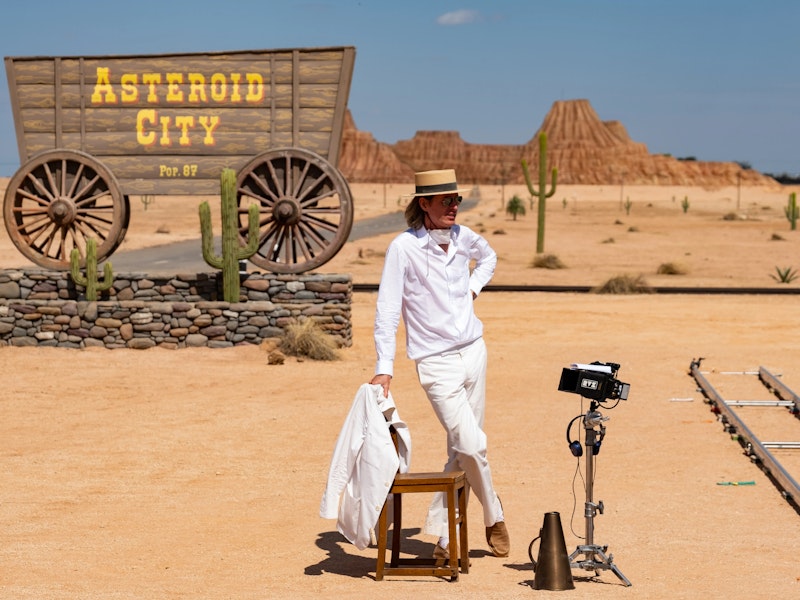The best Warner Bros. cartoon is a live-action feature, Asteroid City, from Universal Pictures. Written and directed by Wes Anderson, the titular city goes from a small town to a boomtown in spite of the boom on the horizon: the mushroom cloud that shakes the ground without shocking the conscience of this world, population 87, according to the rules of the Road Runner, and a cameo by a roadrunner, and the influence of Looney Tunes. The incongruity of the setting complements the insouciance of the players themselves, for the hole in their lives is as deep and wide as the hole that brings them to the bottom of the meteor crater on-screen.
Set between a layer of sand and a stretch of road, the latter disappearing into the distance, Anderson makes the desert bloom. He colors the land red and tan, with accents of green and orange, while shooting the sky in shades of blue, pink, yellow, purple, and white. He clears the way for the viewer, making straight in the desert a highway for a visitor—an alien—from the void. He delivers us to the year of our Lord 1955, where the visitors also include five Junior Stargazers and their respective parents, two mothers and three fathers, the spouseless guardians of the children of the galaxy.
The families converge in the desert, finding white cabins and wigwam villages to dwell in, during their stay at the Motor Court Motel. A courtship between cabin windows ensues, with the actress Midge Campbell (Scarlett Johansson) feigning death and the war photographer Augie Steenbeck (Jason Schwartzman) prophesying doom. Nothing—not even a close encounter of the third kind—seems to surprise the two.
Perhaps because Augie works in “trenches, battlefields, and combat zones,” and knows and feels pain he can’t forget, with the shrapnel lodged in the back of his head, he’s inured to loss. Maybe he doesn’t know what to say, as he goes three weeks without telling his children their mother is dead. Only after their car breaks down and dies, and a lone spark plug rattles and stops, does Augie inform his son, Woodrow (Jake Ryan), and daughters Andromeda (Ella Faris), Pandora (Gracie Faris), and Cassiopeia (Willan Faris) of the news.
Each girl embodies her name, with Andromeda signifying peril and Cassiopeia exuding pride, and Pandora causing men to ask why; with Andromeda shining brightest in autumn and Cassiopeia appearing in the northern sky, and Pandora casting her lot—and burying her mother’s ashes, in a Tupperware container—here on Earth.
The scene is solemn and sardonic, as is the age it represents. It’s the Age of the Atom, and the Age of Absurdity; it’s the Age of Annihilation, and the Age of Abundance; it’s the acme of Space Age design, and the aesthetic of the Acme Corporation, with jet packs and ray guns, and vending machines that sell everything from martinis to real estate, as well as ammunition and beer.
Film references abound, emulating not only the look of, say, Close Encounters, in which a pixel board mimics the light organ in the original, but also featuring the same actor (Bob Balaban).
Images flow in Anderson’s depiction of the desert. To see all the images is to share his vision; to recognize all the images is to watch Asteroid City more than once.

